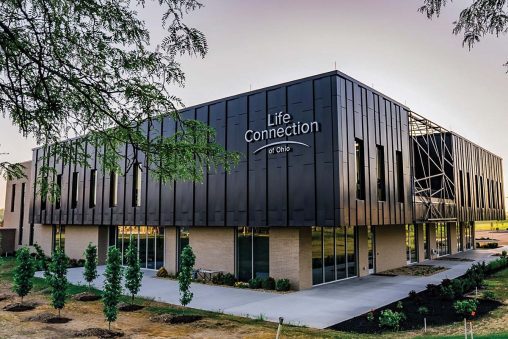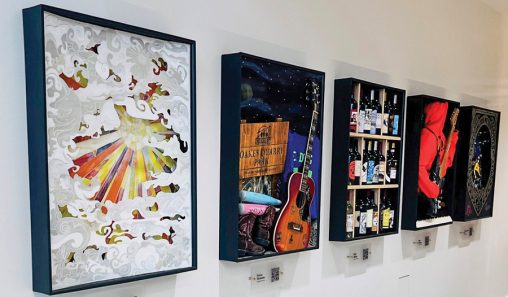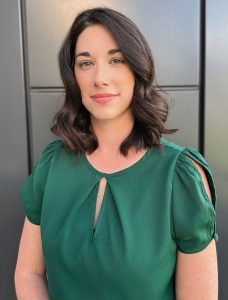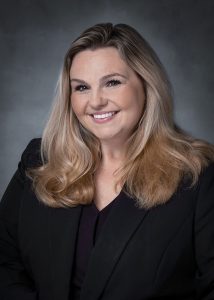 As sciences go, organ transplants are relatively new. The first kidney transplant was in 1954; the first liver, 1963; the first heart, 1967.
As sciences go, organ transplants are relatively new. The first kidney transplant was in 1954; the first liver, 1963; the first heart, 1967.
“It’s not an old science,” Matthew Wadsworth said in reflection.
Organ transplantation is Wadsworth’s profession—not as a doctor, but in a wider sense. The 2007 Wright State University biology graduate is chief executive officer of Life Connection of Ohio, a nonprofit based in Kettering that is the organ procurement organization for the northwest and west-central parts of the state.
Life Connection promotes organ-donor registration, medically manages organ donors in hospitals’ intensive care units, and approaches families of those who aren’t registered but, because of their condition, are potential immediate donors. It began in 1989 with the merger of two other nonprofits that focused on kidney transplants.
Since then, Life Connection—and transplantation in general—has widened its scope to include, as Wadsworth said, “lungs, pancreas, intestines, tissue, heart valves, bones, tendons.”
He said when he arrived in 2020 that Life Connection was ranked 48th among the 57 ODOs nationwide in donation and transplant rates. The most recent figures show that Life Connection is now No. 1.
The rise in transplants is possible because of advances in immunosuppressants, anti-rejection drugs—that prevent the body’s immune system from fighting off the new organ. “I would add that growth has occurred not only due to immunosuppression, but also adoption of pump technology and expansion of the organ donor pool into older patients,” Wadsworth said.
Attesting to that change is Liz Cridlin, Life Connection’s development specialist and a 2013 Wright State graduate in biological sciences. Early in her time with the nonprofit, she was its procurement transplant coordinator. At that time, “we weren’t recovering livers from people with hepatitis C,” she said. “Now, that’s really common because we have come so far in medicine.” Cridlin explained that a donor can be treated for the disease, or the recipient can be treated before receiving the liver and doesn’t get the disease.
“We’re able to recover more organs from a population we weren’t before,” she said. “So, there’s a bigger pool of people who are able to donate.”
The human factor
“People” is a key word, because, while transplanting organs is very much a science, the human factor is paramount.
Life Connection cares for and supports the family of a donor, Wadsworth said. Registering as an organ donor “takes stress off the family to make a decision,” he said. Or a family may not know that their loved one who has died or is on ventilator or mechanical support is a donor.
“Organ donation can help a family heal,” he said, “knowing that a loved one saved a life, or many lives. This gives them comfort in such a terrible situation.”
“One person has the power to save eight lives through organ donation and heal 125 more through tissue donation,” said Stephanie Burianek, Life Connection’s community outreach coordinator and a 2008 Wright State graduate in mass communication.
“Every 10 minutes, another person is added to the national transplant waiting list,” she said. Nationally, 20 people die each day waiting for an organ, she said.
Cridlin develops and helps train Life Connection’s staff of more than 100 to make the donor procedure go properly and smoothly. They’re assembled into three groups, as she explained:
- Hospital development specialists, “the bridge between Life Connection and the hospitals,” she said. These specialists educate the hospital staff and follow the hospital’s policy and regulations regarding potential donor patients.
- Organ recovery coordinators, responsible for the medical management of a patient, matching the donor with the recipient, and ensuring the organs are recovered and transported appropriately.
- Family service coordinators, who speak with families at the time of their loved one’s death to give support and ensure they have all the information and appropriate paperwork.
Cridlin added that she also trains the nonprofit’s clinical staff, “so they have a well-rounded overview of the science of organ transplants.”
Debunking myths
Apart from the science, myths surround organ transplants. Burianek debunks them.
“Number one, people ask, ‘will doctors save my life?’
They’re worried that if a doctor knows they’re a donor, a doctor won’t do everything to help.” Burianek said unequivocally, “Absolutely they will do everything to save you.” She added that only after all life-saving options are exhausted will Life Connection enter the situation.
“Number two, people are worried about the cost; will they get billed?”
She emphasized, “There’s no cost to the donor family. All costs associated with donation are the responsibility of the organ and tissue organizations.” The hospital’s charge ends after death is declared.
“Number three, people ask if they’re too old or too sick to donate. We say, don’t judge a book by its cover; let us be the ones to judge. People with a history of diabetes, cancer, or other conditions can still give the gift of life, such as tissue or corneas.” She added that the oldest organ donor on record was 95.
“Number four is religion—people wonder whether their religion is against organ donation.”
She said most religions encourage donations “as the last act of charity, to give the gift of life, and leave it up to the individual.”
Glimpse of the future
Transplant science is evolving. Wadsworth said, in the past year, progress has been made in genetically modifying pigs to use their kidneys in humans. Also being developed is cryopreservation—the rapid freezing and reheating of an organ, leaving it undamaged.
The thought is to grow genetically modified kidneys in pigs, cryopreserve them, then reheat them when needed to transplant into a person. “That’s the direction we’re going,” he said.
A direction that’s current yet advancing is organ preservation technology, which keeps a removed organ viable longer than otherwise possible.
“We’re able to recover and keep organs outside the body longer for recipients farther away,” Cridlin said.
One such device is in the works thanks to an entrepreneur with a Wright State connection. Klaus Weiswurm enrolled in the university’s systems engineering program in 1969, attended classes part time, and in 1976 moved to Texas, where he completed his education.
The device he and his associates are championing is called ENCORE. It keeps a donor heart secure and filled with a liquid to keep the cells oxygenated and uses a diaphragm pump to put pressure on the organ, making it viable longer, Weiswurm explained. “It mimics the function of the organ in the human body.”
He said it passed trials in animals in 2023 and is expected to go into human trials this year, possibly securing Federal Food and Drug Administration approval in 2025.
He said what sets ENCORE apart from other such devices is it’s less expensive, constantly providing fresh oxygen to the organ, and is comparatively small. “It can fit into a suitcase and go into an overhead bin on an airplane,” which means it can be transported on a commercial airline to get it to anywhere in the world.

Donor Hero Homage art pieces hanging in the hallways at Life Connection of Ohio. This display was created using personal objects from organ donors.
Have the talk
“Overall, society has a pretty positive opinion of organ donation,” Cridlin said. She’s found that many people are willing to be a donor because “they say, ‘I’ll be gone, so if I can help someone else, that’s great.’ What we lack is talking about organ donation with our family members or legal next of kin. We don’t talk about death.”
Life Connection “encourages people to share their decision of being an organ donor with their families,” she said.
“It is a little scary to discuss,” Burianek said, “but crucial. It’s always good to have those uncomfortable conversations early on to make that decision.”
Burianek said Life Connection stands ready “so people get the right information, not hearsay—to get the facts about organ donation so they can make an educated decision.”
Cridlin said the donation process is, “the silver lining in what is always a tragic situation. These families have gone through a tragic event. A lot of the time, they find comfort that their loved ones were organ donors.
“I’ve worked with a lot of families in this situation,” Cridlin concluded, “and every family in my 10 years was thankful they went through the process for donation. It’s hard to put into words, but it provides such a comfort to them when their loved one is able to save somebody else’s life.”
This article was originally published in the 2024 issue of the Wright State Magazine. Read more stories at wright.edu/magazine.



 Wright State alum Emily Romigh builds on a family legacy in education
Wright State alum Emily Romigh builds on a family legacy in education  Wright State receives $3 million grant to strengthen civic literacy and engagement across Southwest Ohio
Wright State receives $3 million grant to strengthen civic literacy and engagement across Southwest Ohio  Fitness Center renovation brings new equipment and excitement to Wright State’s Campus Recreation
Fitness Center renovation brings new equipment and excitement to Wright State’s Campus Recreation  Wright State University settles civil lawsuit against WSARC, now doing business as Parallax Advanced Research Corporation
Wright State University settles civil lawsuit against WSARC, now doing business as Parallax Advanced Research Corporation  Wright State senior paints a new path through fine arts internship
Wright State senior paints a new path through fine arts internship 